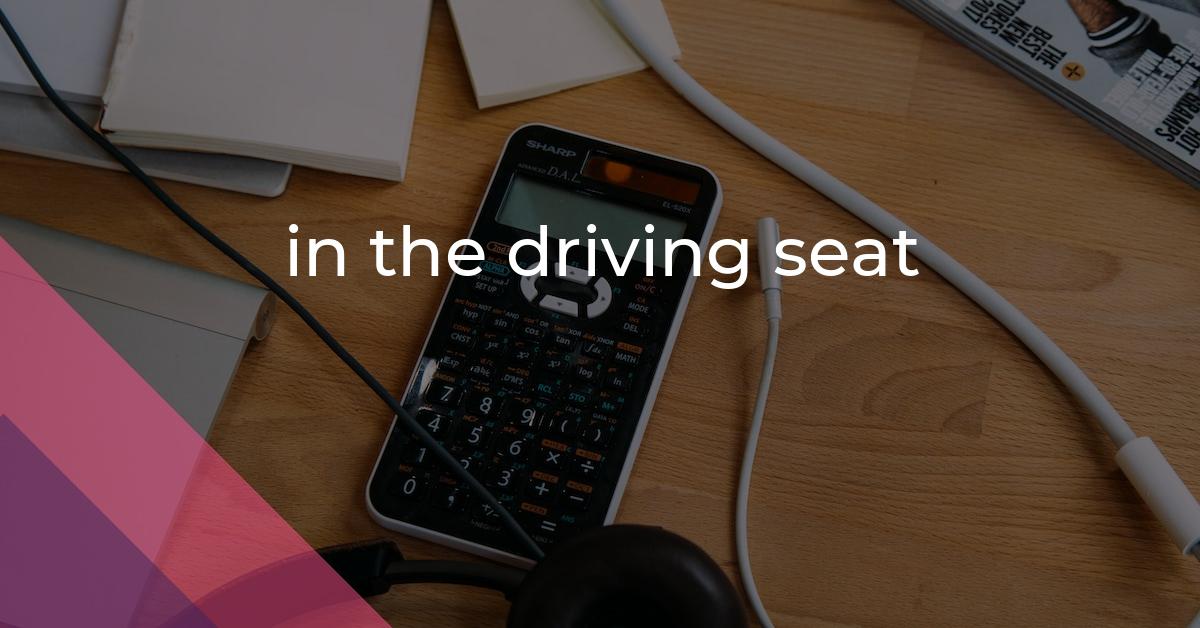in the driving seat: Idiom Meaning and Origin
What does ‘in the driving seat’ mean?
The idiom in the driving seat means to be in control or in a position of power, where one is able to make decisions and direct the course of events.

Idiom Explorer
The idiom "let drive" means to give someone free rein to do something or to allow them to act with full force or intensity.
"Large and in charge" is an idiom that means someone is in a position of power or authority, and they are confident and capable of handling their responsibilities.
The idiom "in the lead" means to be in a leading or winning position, often in a competition or race.
The idiom "in the hot seat" means to be in a difficult or uncomfortable position, often under scrutiny or facing intense questioning.
The idiom "in the front row" means to be in a prominent position or to have a key role in a situation or event.
The idiom "in the driver's seat" means to be in control or have the power to make decisions. It refers to being in a position of authority or leadership.
The idiom "in one's pocket" means having control or influence over someone or something.
The idiom "in one's back pocket" means to have complete control or influence over someone or something.
Decoding Power
The idiom "in the driving seat" is a common phrase used to convey a sense of being in control or in a position of power. Its origin can be traced back to the early 20th century, and it is widely used in both American and British English.
One interesting fact about this idiom is that it is primarily used in figurative or metaphorical contexts, rather than in literal situations involving actual driving. The phrase "in the driver's seat" is typically employed to describe someone who is in a position to make decisions or exert influence over a particular situation. It is similar in meaning to the idiom "in control," which conveys the idea of having authority or power to direct the course of events.
Another fascinating aspect of this idiom is that it has its roots in the literal act of driving a vehicle. In a car, the driver is the one who operates the vehicle and determines its direction. Therefore, being "in the driving seat" implies having control and the ability to steer things in a desired direction. The idiom "in the driving seat" can be seen as synonymous with being "in control," where one is in a position of power and authority.
Furthermore, the idiom can also connote a sense of power or superiority. When someone is "in the driving seat," they are seen as having authority or being in a dominant position, much like a driver who is in charge of the vehicle and its occupants. This aspect of the idiom aligns with the notion of being "in control," where one has the power to make decisions and influence outcomes.
It is important to note that the driving seat, or the front seat of a car, has traditionally been associated with the person in control. In early automobiles, the driver's seat was often the only seat in the vehicle, indicating the sole authority of the driver. As cars evolved to have multiple seats, the driving seat retained its symbolic significance as a position of control. Similarly, when one is "in the driving seat" metaphorically, they are seen as being in charge and having the ability to steer the situation.
Additionally, this idiom is frequently used in business and professional contexts. In the corporate world, being "in the driving seat" suggests being in a leadership position where one can direct the course of action and guide the organization towards success. This aligns with the idiom "in control," where one has the power to make decisions and shape outcomes.
The idiom "in the driving seat" has a figurative meaning of being in control or in a position of power. Its origins can be traced back to the literal act of driving a vehicle and the symbolism associated with the driver's seat. This phrase is commonly used in both American and British English, particularly in professional and decision-making contexts. While the idiom may have a straightforward interpretation, its usage allows for nuanced implications and connotations. Overall, it serves as a powerful metaphor for exerting influence and directing the course of events.
Example usage
Examples of how the idiom in the driving seat can be used in a sentence:
- After a successful interview, James knew he was in the driving seat for the job.
- With excellent negotiation skills, Sarah found herself in the driving seat during the business meeting.
- As the team captain, John felt in the driving seat during the championship game.
More "Transportation" idioms



